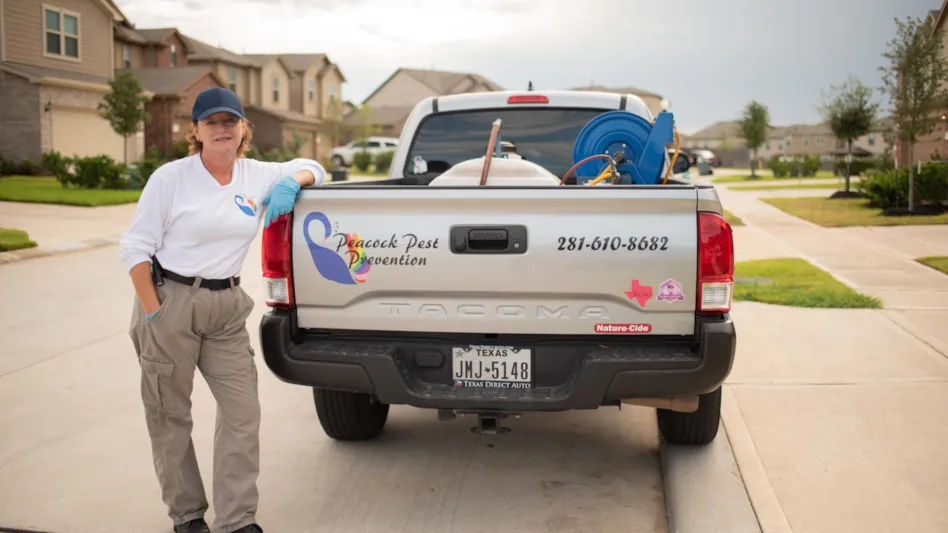
FAIRFAX, Va. — The National Pest Management Association (NPMA) released its biannual Bug Barometer forecast, a seasonal projection of the pest pressure and activity Americans can expect to see in their respective regions of the country based on weather patterns, long-term forecasts and pest biological behaviors. According to the group’s team of entomologists, a mild, wet summer season will spur increased pest activity throughout much of the U.S. as forecasts show looming predictions for a bitter cold winter.
“As much as we all enjoy spending time outdoors and soaking in the summer weather, prolonged periods of warm temperatures throughout the U.S. will heighten pest pressure this fall, allowing stinging insects as well as disease-transmitting pests like ticks and mosquitoes to overstay their welcome in certain regions of the U.S.,” said Jim Fredericks, Ph.D., chief entomologist for the NPMA.
Once temperatures begin to drop, residents across the country should remain vigilant for signs of unwanted invaders and prioritize the necessary prevention measures to keep pests out of their homes.
“Much like their human counterparts, rodents and overwintering pests including boxelder bugs and cluster flies will scurry indoors to escape the elements forecasted for the upcoming winter season,” said Fredericks. “While small in size, rodents can spread 35 diseases to humans and are capable of chewing through wood and electrical wires, increasing the risk of electrical fires. As such, it is crucial to work with a licensed pest control professional at the very first sign of an infestation before it gets out of hand.”
Based on this analysis, the NPMA’s Fall & Winter 2021 Bug Barometer is forecasting an increase in pest pressure across the entire U.S. this season.
Northeast and New England. High temperatures and early rain could allow mosquito and tick populations to thrive well into fall. A bitter winter is expected with colder temperatures and above-average snowfall, which will drive rodents promptly indoors.
Southeast. Cooler conditions in the Southeast are expected to cause warmth seekers such as rodents to hightail it indoors. Above-normal rainfall predictions for Florida could lead to mosquitoes remaining active into early fall.
Great Lakes, Ohio Valley and Midwest. Stinging insect activity will be at its highest during early fall until temperatures start to drop. Bitter cold temperatures and below-average precipitation predicted this winter may drive rodents indoors early and in search of protection from cold temperatures.
North Central U.S. The early onset of above-average snowfall in the southern part of this region may drive rodents and overwintering pests including boxelder bugs and cluster flies indoors early in search of shelter. A mild winter may lead to increased tick activity throughout the region.
South Central U.S. Wet conditions this summer will have allowed mosquito and cockroach populations to thrive. However, early onset of cold conditions could result in a decline in activity. With forecasts calling for colder winter conditions, rodents and overwintering pests including multicolored Asian ladybeetles are expected to move indoors to escape the elements.
Southwest U.S. Mild, wet conditions this summer with late-season rainfall may allow ants to thrive, prolonging their presence this fall. Relatively cold winter conditions with higher snowfall amounts may drive rodents indoors in search of food and adequate shelter. This may be less of a concern in the Pacific Southwest.
Northwest U.S. Warm, wet conditions this summer could allow mosquito and tick populations to thrive into the fall months. Cold, dry conditions this winter are likely to drive rodents indoors in search of food, water and shelter. If cooler temperatures are delayed, stinging insect activity could remain high into early fall.
Latest from Pest Control Technology
- PCO Follows the Carpenter Bee Clues
- Bird Control Can Be Lucrative, But it’s Not for Every Company, PCOs Report
- Gerry Wegner on the New PCT Field Guide to Stinging and Biting Arthropods
- PCO Bookkeepers & M&A Specialists Recognize Pinnacle Performance Award Winners
- Ground Control
- Scientists, PMPs Collaborating to Map Termite Distribution in Southern U.S.
- Viking Pest Control Organizes a Charity Bike Build for Local Families
- Gaining Control of Structure-Infesting Carpenter Ants





